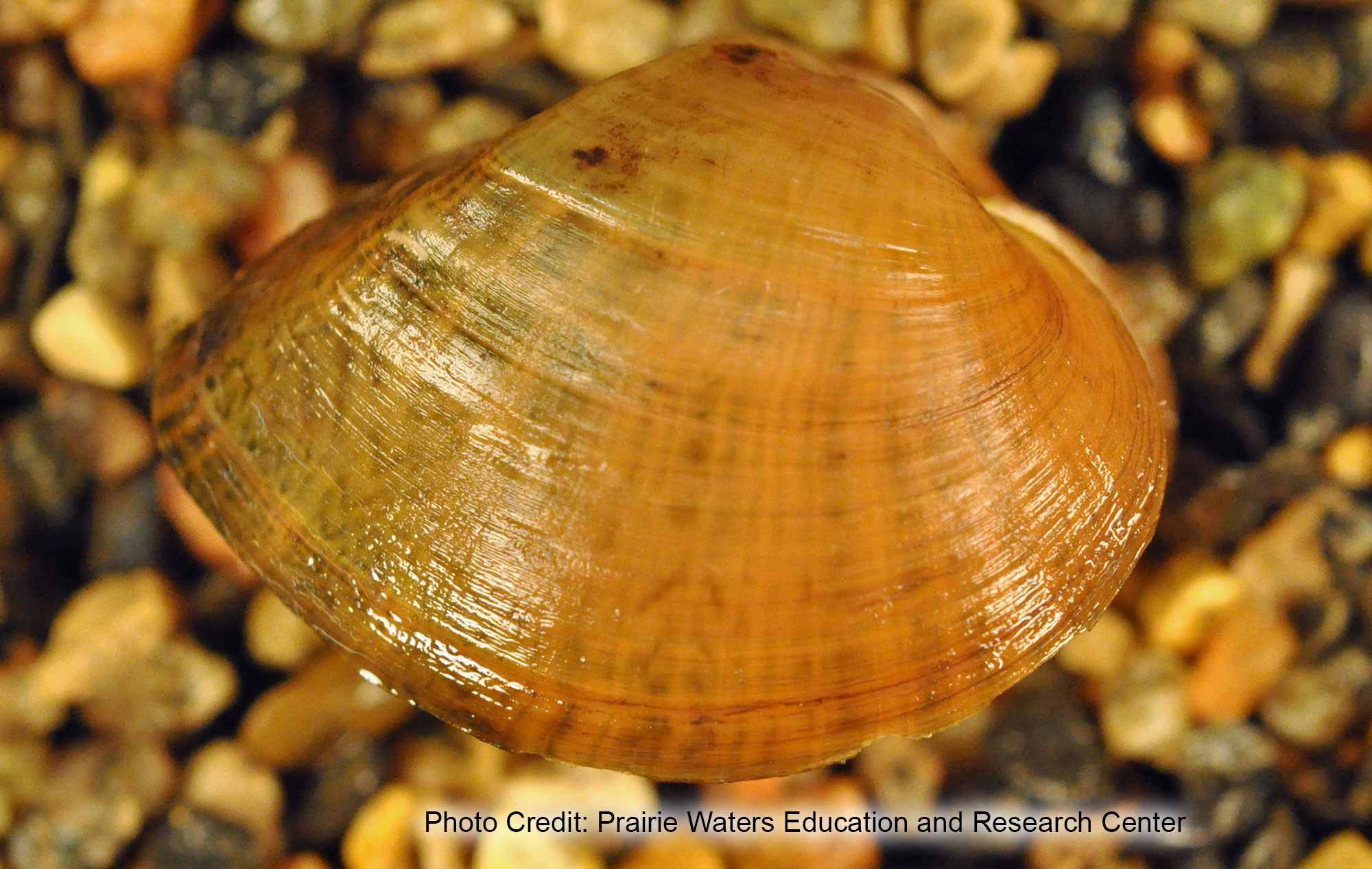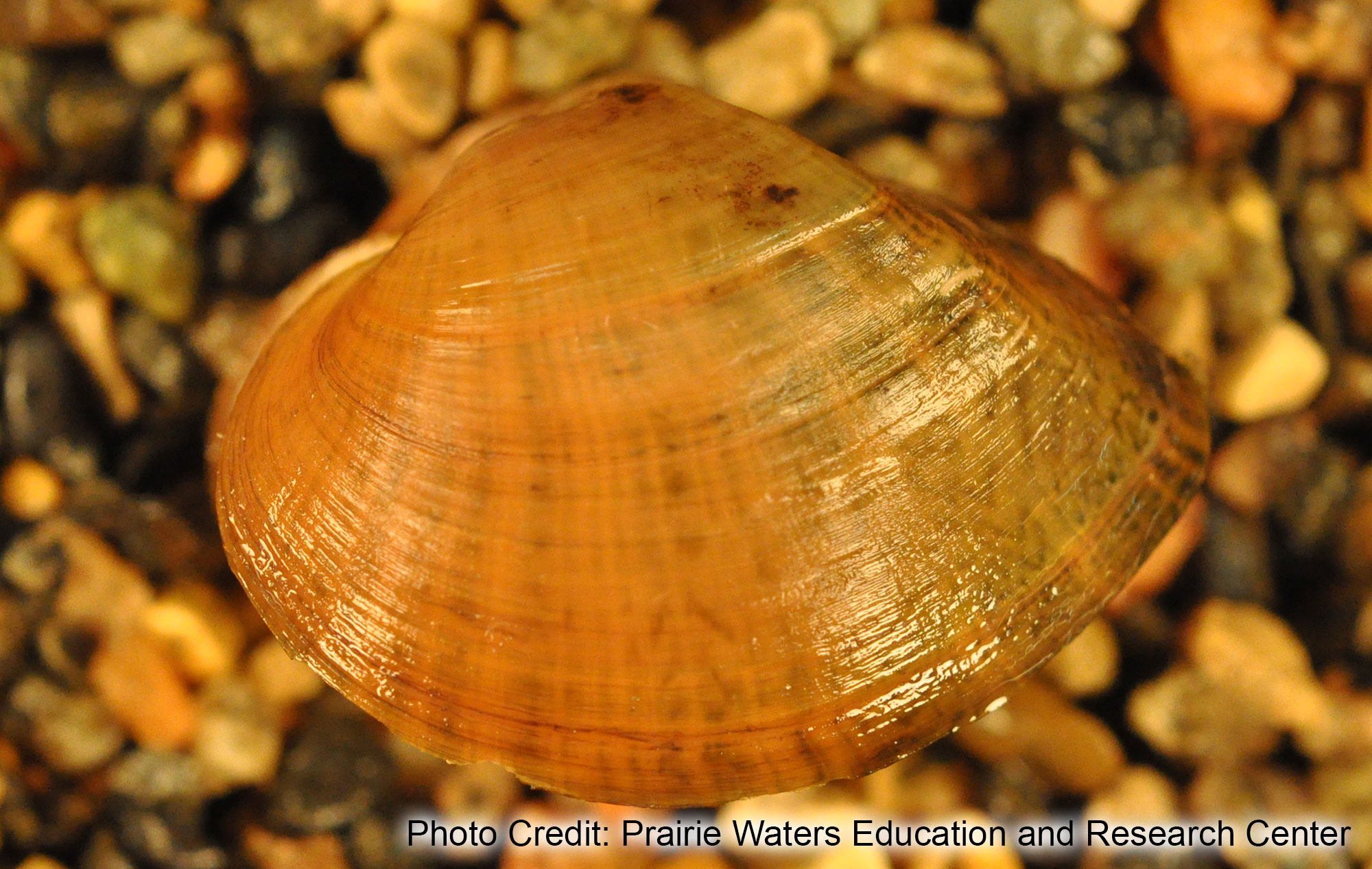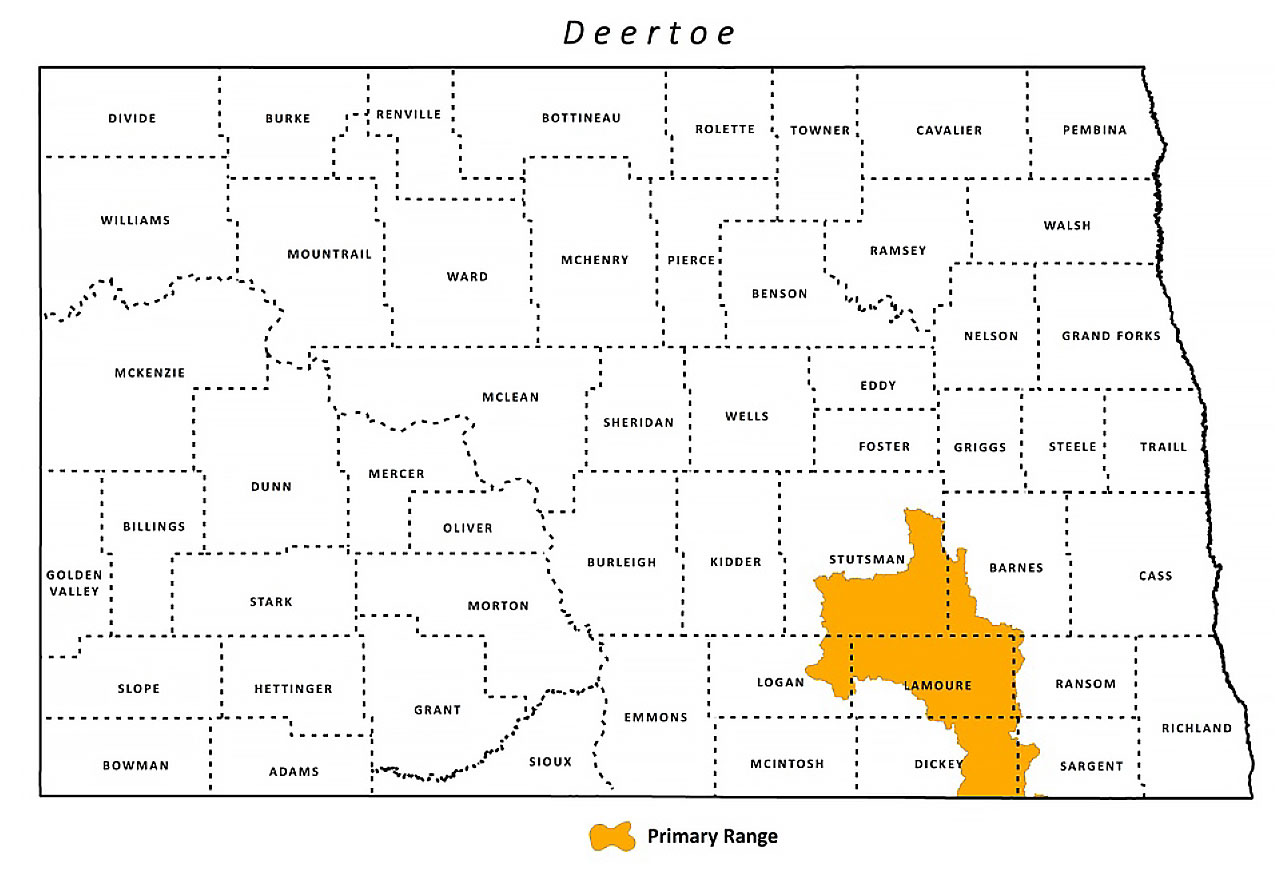
Deertoe
| Scientific Name | Truncilla truncata |
|---|---|
| General Description | North Dakota’s smallest mussel. Shell is generally triangular in shape. Anterior rounded, posterior bluntly pointed. Color is highly variable ranging from yellow green to dark brown. Green rays present of varying widths. |
| Status | Year-round resident. |
| Abundance | Rare. |
| Primary Habitat | Found in medium to larger river systems. Bottom substrate can be gravel, mud or sand. |
| Federal Status | None. |
| Reason for Designation | The Deertoe was found in low numbers during recent surveys. The species may be on the edge of its range and requires more investigation. |
Images


(Photos courtesy of Prairie Waters Education and Research Center - Valley City University)
Locations and Conditions of Key Habitat
Preferred Habitat
The Deertoe is found in medium to large rivers with mud, sand or gravel bottoms.
Key Areas and Conditions for Deertoe in North Dakota
Deertoe are found throughout the Mississippi and Missouri river systems nationally. In North Dakota the Deertoe is currently found only in the James River in North Dakota.
Problems Which May Affect this Species
Habitat
Impoundment of the James River has changed the historic flow regime of the river. It has also blocked movements of fish species and in turn mussel species. Land use practices on surrounding lands have also impacted the river negatively. Chemical run-off and sedimentation contribute to deteriorated water quality.
Other Natural or Manmade Factors
No other threats have yet been identified for this species.
Research and Survey Efforts
Current Research or Surveys
- No current research or survey efforts are on-going in this species range.
Previous Research or Surveys
- Cvancara conducted a state-wide survey of the mussels of North Dakota in 1978.
- The North Dakota Game and Fish Department revisited Cvancara’s sites in 1990.
- Valley City State University revisited Cvancara’s sites and surveyed additional sites in 2008.
- The NDDH conducted freshwater mussel surveys for state waters as a segment of its Index of Biotic Integrity (IBI) work.
Additional Research or Surveys Needed
- Additional surveys of the James River should be conducted to find the range of this species.
- A monitoring protocol for mussel species has been developed for the North Dakota Game and Fish Department under the SWG program. Implementation of this monitoring protocol is a future goal.
Management Recommendations
- Develop buffers along riparian areas.
- Work with partners to reduce the use of chemical near waterways.
- Work with partners to reduce wetland drainage.
- Remove river impoundments where possible.
- Work with partners to maintain instream flows.
Monitoring Plans
A monitoring protocol has been developed for the North Dakota Game and Fish Department under the SWG program. Implementation of this monitoring protocol is a future goal.
2005-2015 Progress
Added as a Level III Species of Conservation Priority in the 2015 revision of the Wildlife Action Plan. SWG T-24-R A Two Phase Population Survey of Mussels in North Dakota Rivers provided important information on the distribution of this species. Work to implement a monitoring protocol for mussels species will is a goal of the revised Wildlife Action Plan.

Note: A listing of works consulted when compiling the information on this page may be found in the 2015 State Wildlife Action Plan.
